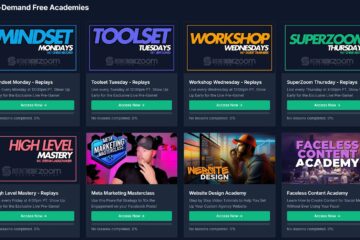Freelancing has become one of the most accessible and flexible ways to earn money online. Whether you’re a writer, graphic designer, developer, or marketer, freelancing allows you to work on your own terms while serving clients worldwide. With platforms like Upwork, Fiverr, and PeoplePerHour, finding freelance work has never been easier.
In this guide, we’ll explore how to get started, build your portfolio, and grow a successful freelancing career in 2025.
What is Freelancing?
Freelancing is when individuals offer their skills and services to clients on a contract basis rather than working as full-time employees. Freelancers can take on multiple projects from different clients at once and set their own rates and schedules.
Some common freelance services include:
- Writing & Editing – Blog writing, copywriting, proofreading
- Graphic Design – Logo design, branding, social media graphics
- Web Development – Building websites, coding, software development
- Digital Marketing – SEO, social media management, email marketing
- Virtual Assistance – Administrative tasks, scheduling, customer support
How to Get Started as a Freelancer
If you’re new to freelancing, the process can feel overwhelming. However, by following these steps, you can start building a successful freelance career.
1. Choose Your Niche
First, decide what service you want to offer. It’s best to focus on a specific niche rather than trying to do everything. For example, instead of being a general writer, specialise in SEO blog writing or email marketing copywriting.
Consider these factors when picking your niche:
- Your skills and experience
- Market demand (check job listings on freelance platforms)
- Your interests and long-term career goals
2. Create a Strong Profile on Freelance Platforms
To attract clients, you need a professional and compelling profile on platforms like:
- Upwork – One of the largest freelance marketplaces
- Fiverr – Best for gig-based services
- PeoplePerHour – Ideal for UK-based freelancers
- Toptal – Focuses on high-quality freelancers in tech and design
Your profile should include:
✅ A professional photo
✅ A catchy headline (e.g., “SEO Content Writer | Blog & Website Copy Expert”)
✅ A detailed bio that highlights your expertise and experience
✅ Your portfolio (samples of your past work)
✅ Client testimonials (if you have any)
3. Build a Portfolio (Even Without Experience)
Clients want to see proof of your skills before hiring you. If you’re just starting, here are some ways to build a portfolio:
- Create sample projects (e.g., write a blog post, design a mock-up, or build a simple website).
- Offer free or discounted work to friends, small businesses, or charities.
- Start your own blog or website showcasing your expertise.
A strong portfolio increases your chances of landing high-paying freelance jobs.
Finding Clients & Getting Your First Job
Once your profile is ready, it’s time to look for freelance work. Here’s how you can land your first gig:
1. Start with Small Projects
If you’re new, it’s easier to secure small, low-risk projects. Many clients prefer experienced freelancers, so gaining some initial reviews can help.
2. Apply for Jobs Daily
Check for job postings on platforms like Upwork and Fiverr every day. Send personalised proposals that highlight how you can help the client rather than using generic templates.
3. Use Social Media & Networking
Your next client could be on LinkedIn, Twitter, or Facebook. Share your work, connect with potential clients, and join freelance groups.
4. Ask for Referrals
Once you complete a project, ask your client for a testimonial or referral. Positive reviews help build credibility and attract more clients.
How to Grow Your Freelance Business
Once you’ve completed a few projects, you can start growing your freelance career by:
1. Increasing Your Rates
As you gain experience and positive reviews, gradually increase your rates. Don’t be afraid to charge what your skills are worth.
2. Specialising in a High-Demand Skill
Freelancers who specialise in niche skills often earn more. For example:
- Instead of being a “graphic designer,” become a brand identity designer.
- Instead of “writing content,” focus on SEO copywriting.
3. Offering Retainer Services
A retainer agreement means a client pays you a fixed fee every month for ongoing work. This provides a stable income instead of relying on one-time projects.
4. Automating & Outsourcing
As your workload increases, consider outsourcing tasks or automating parts of your business (e.g., using invoicing tools like PayPal or FreshBooks).
Pros & Cons of Freelancing
Pros
✅ Flexible Schedule – Work when and where you want.
✅ Unlimited Income Potential – Your earnings depend on your effort and skill.
✅ Independence – Be your own boss and choose your clients.
✅ Work-Life Balance – No commuting, more time for personal life.
Cons
❌ Inconsistent Income – Work may not always be stable.
❌ No Benefits – No paid holidays, insurance, or pension like a regular job.
❌ Self-Discipline Required – You need to manage your own time and finances.
Despite these challenges, freelancing can be highly rewarding if you stay consistent and keep improving your skills.
Final Thoughts
Freelancing is one of the best ways to make money online in 2025. Whether you’re looking for a side hustle or a full-time career, it offers great flexibility and income potential.
Key Takeaways:
✅ Pick a niche and build a strong portfolio.
✅ Create a professional profile on freelancing platforms.
✅ Apply for jobs daily and start with small projects.
✅ Deliver quality work and ask for client testimonials.
✅ Scale your business by increasing rates and offering retainers.
If you’re ready to start freelancing, set up your profile today and take your first step towards financial independence!
For other ideas on how to Make Money Online check out: https://makemoneywithrod.com/


